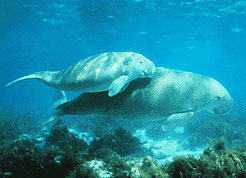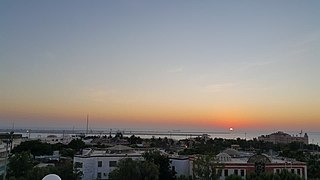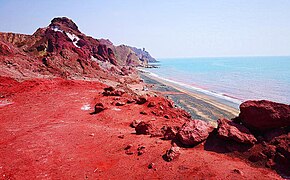Arabian Sea
The Arabian Sea (also called the Arabian Sea or Oman Sea) is a sea that forms part of the Indian Ocean and is located on the southwestern coast of Asia, between the Arabian peninsula and the Hindustan peninsula. It is the largest sea in the world with 3,862,000 km² in area.
Geography
The Arabian Sea is bordered, from west to east, by Somalia, Yemen, Oman, Pakistan, India, and the Maldives. The United Arab Emirates does not have a coast to this sea, but to one of its inlets, the Gulf of Oman, in the northwest, which then narrows until it connects with the Persian or Arabian Gulf in the Strait of Hormuz.
 India - 2,500 km of coast
India - 2,500 km of coast- Pakistan
 Pakistan - 1.050 km of coast
Pakistan - 1.050 km of coast - Iran
 Iran
Iran - Maldives
 Maldives
Maldives - Oman
 Oman
Oman - Yemen
 Yemen
Yemen  Somalia
Somalia
The greatest width of the Arabian Sea is about 2,400 km, and its greatest depth is 4,652 m, near the Arabian peninsula, about the same latitude than the southern tip of India. The Indus is the only large river that flows into this sea.
Its major coastal cities include Bombay in India and Karachi in Pakistan. Other major cities are Muscat, Aden, Salalah, Thiruvananthapuram, Kochi, Kozhikode, Kollam Mangalore, Bhavnagar and Jamnagar.
Among the best-known spa centers are:
- the beaches of Karachi and Clifton;
- the beaches of Goa;
- Juhu beach, in Bombay.
Delimitation of the IHO
The highest international authority on the delimitation of seas, for maritime navigation purposes, the International Hydrographic Organization ("International Hydrographic Organization", IHO), considers the Arabian Sea ("Arabian Sea") as a sea. In his world reference publication, "Limits of oceans and seas" (Limits of oceans and seas, 3rd edition of 1953), he assigns it the identification number 39 and defines it as follows:
West.
The eastern boundary of the Gulf of Aden (38).
North.
A line linking Ras to Hadd, the eastern point of Arabia (22°32'N) and Ras Jiwani (61°43'E) on the coast of Pakistan.
South.
A line from the southern end of the Addu atoll (Maldives), to the eastern end of Ras Hafun (Africa, 10°26'N).
East.
The western boundary of the Laquedivas Sea (42).Limits of oceans and sea, p. 21.
Islands
There are several islands in the Arabian Sea, the most important being the Laccadive Islands (India), Socotra (Yemen), Masira (Oman) and Astola Island (Pakistan).
The Laccadive Islands (formerly known as the Laccadive, Minicoy and Aminidivi Islands) are a group of islands located in the Laccadive Sea region of the Arabian Sea, between 200 and 440 km off the southwestern coast of India. The archipelago is a territory of India and is governed by the Union Government of India. The islands form the smallest union territory in India, with a total area of only 32 km2. Adjacent to these islands are the Maldives islands. All these islands are part of the Lakshadweep-Maldives-Chagos group of islands.
Socotra, also spelled Soqotra, is the largest island and is part of a small archipelago of four islands. It is located about 240 km east of the Horn of Africa and 380 km south of the Arabian Peninsula.
Masirah is an island off the eastern coast of Oman.
Astola Island, also known as Jezira Haft Talar in Balochi, or "Island of the Seven Hills," is a small uninhabited island in the far north of the Arabian Sea, in Pakistani territorial waters.
Zalzala Koh was an island that existed for a few years. Following the 2013 earthquake in Pakistan, the mud island was formed. In 2016 the island was finished.
Zone of oxygen minimum
The Arabian Sea has one of three oxygen minimum zones (OMZs) or "dead zones" largest oceanic regions in the world, along with the eastern tropical North Pacific and eastern tropical South Pacific. Oxygen minimum zones have very low levels of oxygen, sometimes undetectable by standard equipment.[19] The Arabian Sea oxygen minimum zone has the lowest levels in the world, especially in the Gulf of Oman. The oxygen minimum zone can be untreated sewage and high temperatures on the Indian subcontinent, which increase the winds blowing towards India, bringing nutrients and reducing oxygen in the waters of the Arabian Sea. In winter, phytoplankton adapted to low-oxygen conditions turn the OMZ bright green.
Environment and fauna
The fauna of the Arabian Sea is diverse and totally unique due to its geographical distribution.
Contenido relacionado
Marseilles
Ibon
Berrocalejo (Caceres)









